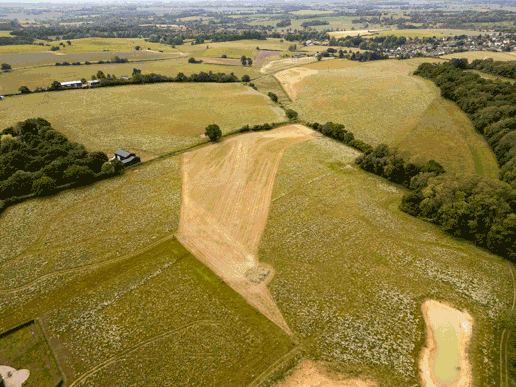Growth of the Biodiversity Net Gain (BNG) Metric: Insights from Natural England’s Nick White

Biodiversity Net Gain (BNG) has reshaped how we approach development and nature recovery in the UK. What began as a voluntary idea is now a world-leading, mandatory framework that ensures new developments contribute positively to the natural environment.
In this conversation, Nick White, Principal Advisor for Net Gain at Natural England, shares his insights into the past, present, and future of the BNG metric, including what lies ahead for developers and practitioners as it continues to evolve.
From vision to legislation: How the BNG metric began
The original vision for BNG was simple but powerful: could development actively improve biodiversity rather than reduce it?
“It was an idea that came from the development sector as much as the conservation world,” explains Nick White. “Developers wanted to explore how planning could leave the environment in a better state than before.”
Initially a voluntary approach, BNG has since been written into legislation, providing a consistent national standard for quantifying ecological improvements. The Natural England BNG metric — now used worldwide — helps developers measure and demonstrate their environmental impact in a transparent, data-driven way.
“BNG helps us see that nature and development don’t have to be in conflict; both can thrive together.”
— Nick White, Natural England
Setting a standard: Habitat Management and Monitoring Plans (HMMPs)
Since mandatory BNG came into force, every project must include a Habitat Management and Monitoring Plan (HMMP) alongside the Biodiversity Gain Plan.
To help industry stakeholders navigate this, Natural England published a standardised template. This framework encourages a consistent, clear approach across developers, consultants, and local authorities, making it easier to manage, monitor, and verify biodiversity outcomes.
“The template isn’t mandatory,” says Nick, “but it’s proving useful for everyone, from ecologists to legal teams working on Section 106 agreements and conservation covenants.”
Summer of 2025, one year on from the birth of their HMMP, Natural England sought feedback with the aim of making it even more effective. This process reflects a wider trend in BNG: collaboration and continuous improvement through shared learning and practical experience.
The Future of the BNG metric: From Excel to digital
A key theme for the next phase of Biodiversity Net Gain is BNG digitisation.
Currently, the BNG metric is built in Excel, a decision driven by accessibility and limited early resources. “In an ideal world, it wouldn’t have been built in Excel,” Nick notes, “but the advantage is that everyone can use it.”
The UK Government has expressed interest in developing a digital BNG platform, allowing for API integration, real-time validation, and better data sharing between stakeholders.
However, as Nick cautions, the transition will need to be gradual:
“Even when a digital version arrives, there must be a transition period. The key is ensuring that values remain consistent across systems.”
For developers and land managers, this evolution could significantly enhance BNG reporting, automation, and traceability, while also connecting biodiversity data with wider planning and GIS systems.
Simplifying BNG for smaller sites
Another exciting area of development is the Small Sites Metric, designed for lower ecological risk sites such as small residential or commercial projects.
“There’s potential to make the small sites process more streamlined and creative,” Nick says. “Technology could help make assessments faster and more proportionate, while maintaining ecological integrity.”
This evolution could make Biodiversity Net Gain for small sites more practical and cost-effective, especially for SMEs, local planning authorities, and regional developers.
What this means for developers and land managers
BNG is now embedded in UK planning law, and its successful implementation depends on collaboration between government, developers, and land managers.
For developers, it’s about moving from compliance to nature-positive design. For landowners, it’s about creating measurable ecological value through effective habitat creation and long-term stewardship.
We're working at the forefront of this change. Our teams are helping clients integrate the BNG metric into project design, ensuring that habitats are not just protected but actively enhanced. Using advanced mapping, ecological expertise, and technology-enabled monitoring, we support the delivery of robust, defensible BNG outcomes.
Looking ahead: a shared commitment to nature recovery
As Nick White concludes, “It’s about seeing nature and development not as being in conflict, but as something where you can achieve both.”
That vision of growth and nature in harmony is one that Ground Control shares. By working with Natural England’s frameworks, embracing digital tools, and maintaining transparency in how gains are measured, we can help shape a future where every project contributes to nature recovery at scale.
Need support with biodiversity net gain for your development?
Get in touch
Evergreen Fund: Five years of habitat creation and climate action

The evolving biodiversity net gain market: Insights from Evergreen





